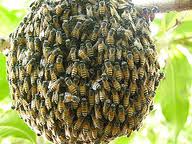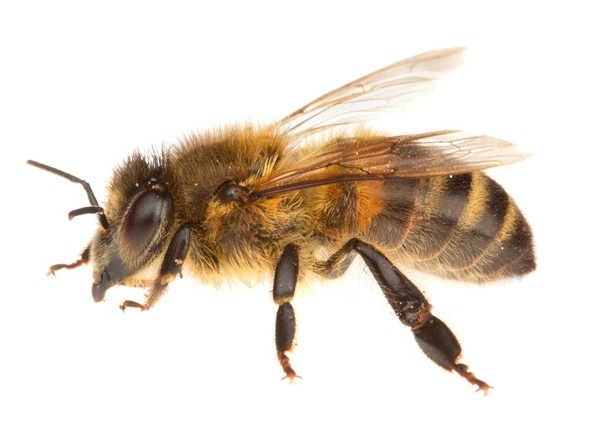Honey Bee Colony
Bees are social insects. This means that they are highly developed and participate in diverse complex tasks such as division of labour and defence.
A colony of honeybees is so elaborately connected that they can almost be considered a single organism. This is not a trifle, considering the colony can consist of a queen, up to 60.000 sexually underdeveloped worker bees and about 1000 drones or males.
When the colony becomes too large, the queen flies away from the hive. In this case, about 60% of the colony will fly with her to found a new colony somewhere else. This is called swarming. The bees that stayed behind will begin to give one of the fertilised eggs nothing but royal jelly, so it will develop into a new queen.
Each colony lives in its own hive. A swarm of bees weighs between 1 and 3kg. In the hive, there is a permanent honey supply of 10 to 40kg.
Composition
Each individual bee has a task which contributes to the welfare of the entire colony. The bees are dependent of one another for survival, they are part of what is called a structural functionalist system.
Queen
Each colony usually has one queen or "mother", whom is responsible for the continuous survival of the people.
During the flowering period she lays 1.000 to 2.000 fertilised and unfertilised eggs daily. That means she lays up to 200.000 eggs per season.
To do this, the queen receives enough energy and proteins thanks to her diet of royal jelly. This is a gland secretion of adult worker bees.
The queen is up to one third larger than a worker bee and has a life expectancy of 4 to 5 years.
Worker bee

The fertilised eggs also develop into worker bees. These eggs (larvae) were fed only partially with royal jelly - unlike the queen. They mostly received honey and pollen as food.
Worker bees do all the work, but don't lay any eggs. Larvae are completely dependent on the constant care of adult bees.
In spring and summer, a worker bee has a life span of 35 to 40 days. Of these 40 days, she does about 20 days "internal service" (cleaning, feeding, heating, ventilating) and 20 days "external service" (tracing and collecting). After this, she dies.
In winter months, worker bees can live for between 6 and 8 months.
Drone
From the unfertilised eggs, male bees or drones develop. Drones are only produced by the queen when there is sufficient nectar and pollen available.
The only task a drone has is mating with the queen. This happens during the nuptial flight. The drones with which she mates, die after mating. They live for only a few weeks and are the first to be banished when the circumstances of the colony deteriorate.



